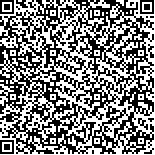| 引用本文: | 唐永康,蔡旭哲,吴浩,吴志强,艾为党,沈韫赜,毛瑞鑫,胡清华,王隆基.空间植物栽培装置方案与验证[J].哈尔滨工业大学学报,2024,56(4):158.DOI:10.11918/202307051 |
| TANG Yongkang,CAI Xuzhe,WU Hao,WU Zhiqiang,AI Weidang,SHEN Yunze,MAO Ruixin,HU Qinghua,WANG Longji.Scenario and verification of a space plant cultivation facility[J].Journal of Harbin Institute of Technology,2024,56(4):158.DOI:10.11918/202307051 |
|
| |
|
|
| 本文已被:浏览 3424次 下载 4058次 |

码上扫一扫! |
|
|
| 空间植物栽培装置方案与验证 |
|
唐永康1,蔡旭哲2,吴浩2,吴志强1,艾为党2,沈韫赜2,毛瑞鑫2,胡清华2,王隆基2
|
|
(1.人因工程全国重点实验室(中国航天员科研训练中心),北京 100094; 2.中国航天员科研训练中心,北京 100094)
|
|
| 摘要: |
| 为满足空间植物培养的需求,基于空间微重力环境和平台资源约束,开展了根部水分和养分控制、栽培室大气环境控制、光环境控制等方面的空间植物栽培装置方案研究。研制了具有水分/养分供应、大气环境控制、光源、测量与控制、栽培室和根盘等6个功能模块的空间植物栽培装置。开展了装置的集成与调试,对装置各功能模块设计合理性进行验证。最后利用组合体试验平台,进行装置各功能模块集成性能验证、植物功能评价验证(生物学特性、物质和能量交换、营养品质和生物安全性等)及植物栽培流程验证(流程合理性、资源需求及保障、与环境之间的相互影响)。验证结果表明:水分供应、养分供应、大气环境控制、植物光照控制和参数测量控制等性能良好,能够满足植物培养对各类生长环境条件的需求;生菜生长旺盛,生产效率101.31 g(鲜质量)·(kWh)-1·d-1·m-2,光能利用率0.31 g(干质量)·mol-1光子,富含各种营养,食用安全。装置方案和植物栽培流程合理可行,性能良好,具有较高的植物生产能力。研究结果为后续开展空间植物栽培装置研制奠定了技术基础。 |
| 关键词: 空间 植物 栽培 装置 方案 |
| DOI:10.11918/202307051 |
| 分类号:V419 |
| 文献标识码:A |
| 基金项目:人因工程全国重点实验室基金(GJSD1,1) |
|
| Scenario and verification of a space plant cultivation facility |
|
TANG Yongkang1, CAI Xuzhe2, WU Hao2, WU Zhiqiang1, AI Weidang2, SHEN Yunze2, MAO Ruixin2,HU Qinghua2, WANG Longji2
|
|
(1.National Key Laboratory of Human Factors Engineering (China Astronaut Research and Training Center), Beijing 100094, China;2.China Astronaut Research and Training Center, Beijing 100094, China)
|
| Abstract: |
| To satisfy the needs of plant cultivation in space, the scenario of a space plant cultivation facility(SPCF) was conducted, based on the limited resources and microgravity in space environments. The study contents included water and nutrient control around roots, atmospheric environment control in cultivation room, and light environment control, etc. The facility was designed with six functional modules, consisting of water and nutrient supply module, atmospheric environmental control module, light module, measurement and control module, cultivation room module, and root tray module. The integration and testing of the facility were carried out and the rationality of the design of each functional module was verified. Finally, the combination testing platform was used to verify the integrated performances of various functional modules of the facility, evaluate plant functions (biological characteristics, material and energy exchange, nutritional quality, and biosafety), and verify plants cultivation processes (process rationality, resource requirements and supply, and mutual impact with the environment). The verification results indicated that the performance of water supply, nutrient supply, atmospheric environmental control, illumination control, as well as the measurement and control is well, meeting the demands of plant growth in space. Lettuce grow vigorously with a production efficiency of 101.31 g (fresh weight)·(kWh)-1·d-1·m-2 and a light energy utilization rate of 0.31 g (dry weight)·mol-1 photons. More importantly, the lettuce is nutrient rich and safe for consumption. The scenario of facility design and cultivation procedures are reasonable and feasible with good performance and high production capacity. This study establishes technical foundations for the future development of plant cultivation facility targeting space environments. |
| Key words: space plant cultivation facility scenario |
|
|
|
|







